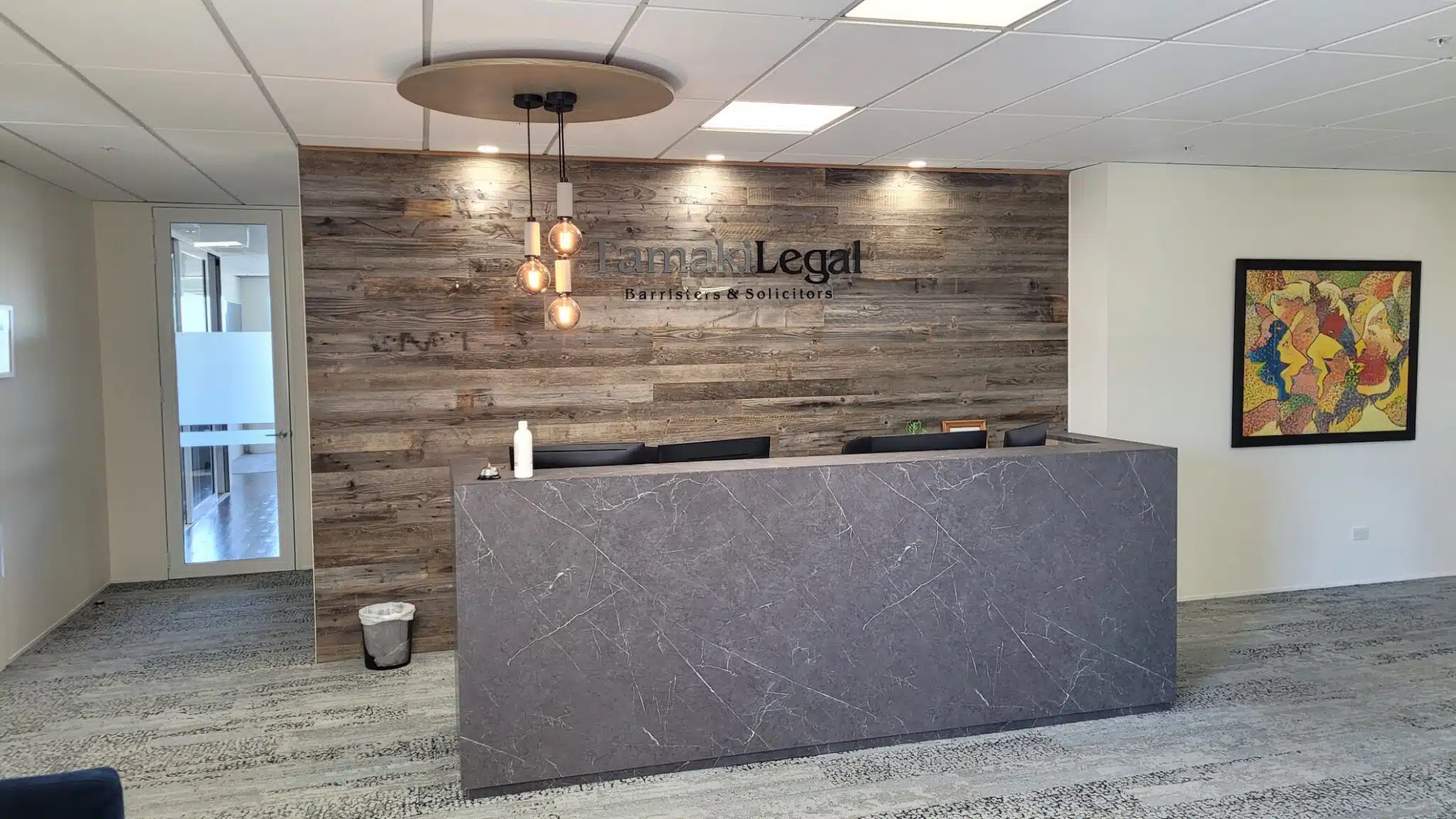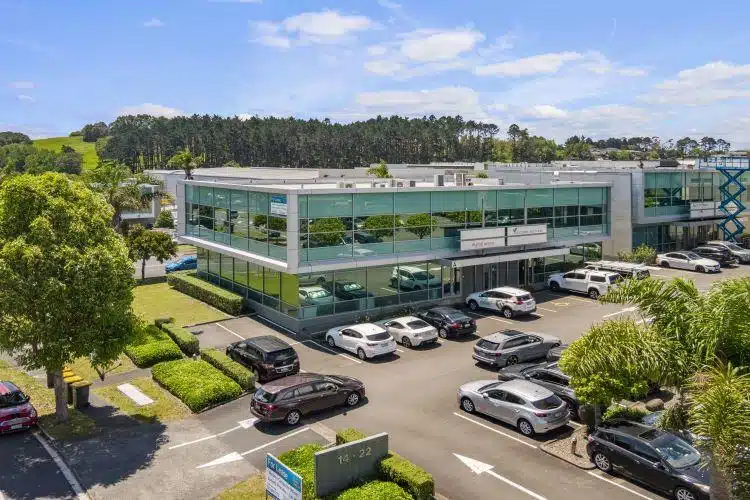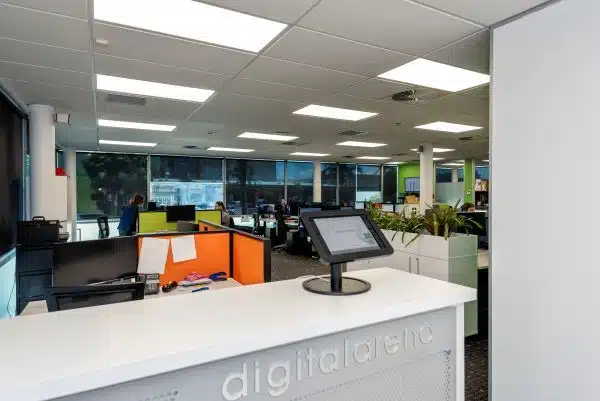
Case Study: Achieving financial flexibility: Sale and Leaseback unlocked
Digital Arena: Structuring the sale and leaseback to maximise the equity unlocked
Case Study No: 17

Unlocking Financial Potential: A Success Story of Sale and Leaseback
Digital Arena is the IT services and retail automation specialist behind various household brands in the marketing, communications and retail industries in New Zealand.
If you’ve ever booked a flight, refueled your car, or tackled home improvement projects, you’ve likely encountered retail automation.
After owning their premises for 17 years, the director of Digital Arena opted to tap into the equity accumulated in their commercial office space.
This case study delves into Digital Arena’s journey, showcasing the advantages and outcomes of their decision to engage in a sale and leaseback transaction.
Drawing from his experience overseeing the National Bank’s triumphant 16-branch sale and leaseback initiative in 2008, Marcus, along with Proactive Property Group, was entrusted with the task of orchestrating the sale and leaseback of Digital Arena’s commercial office premises.
Understanding Sale and Leaseback
A sale and leaseback transaction involves an owner-occupier selling their property while simultaneously leasing it back from the buyer at an agreed-upon rental rate and term.
This approach grants the owner-occupier the flexibility to establish lease terms that align with their business needs. However, they must balance this flexibility with investor considerations to maximise the sale price.
The structure of the lease plays a pivotal role in driving value for the owner-occupier. Purchasers are not solely investing in the property itself; they’re also investing in lease cash flows and the creditworthiness of the owner-occupier.
A well-structured lease can transform the leased property into an appealing, stable, and long-term investment opportunity for the buyer.
Strategic Steps Taken
Marcus collaborated closely with Digital Arena’s director to determine the company’s future lease requirements. Cash flows and end values were meticulously modelled to ensure alignment with desired outcomes.
Marcus then went to market sourcing agency proposals to market and transact the sale. After reviewing the agency proposals and interviewing the shortlisted agents, Matt Prentice and Janet Marshall from Collier’s North Shore office were appointed to sell the office premises.
Once the agency was appointed, the next step was to prepare for sale. This included:
- Measuring and surveying the commercial office premises to define the leasable area.
- Conducting a structural survey to confirm a 100% NBS seismic rating for the building.
- Drafting a comprehensive deed of lease with the assistance of Digital Arena’s solicitors.
- Creating a detailed tenant biography within the marketing Information Memorandum to offer potential purchasers insight into Digital Arena’s business, clients, and resilience to challenges like Covid-related lockdowns.
The lease structure was crafted to accommodate Digital Arena’s operational needs, with management expenses excluded from operating expenses (OPEX) to eliminate future landlord charges for management costs.
Rental cashflows were structured with guaranteed annual increases and market reviews to entice potential investors.
Detailed schedules of landlord fixtures and tenant chattels were integrated into the lease to anticipate downstream market rent valuations and facilitate discussions related to building maintenance and premises reinstatement.
Navigating Challenges
During the property records compilation for purchaser due diligence, a significant challenge emerged: the commercial office fit-out had never been officially approved by the Council, and a Code Compliance Certificate was absent.
Marcus took decisive action, commissioning his designers to create as-built floor plans, coordinating a fire engineer’s assessment of fire egress, and initiating a building consent variation. The result was the issuance of a Code Compliance Certificate, ensuring the premises were compliant and ready for market.
Achieving The Client Outcome
Colliers launched the marketing campaign for the premises in mid-October 2021, with the intention of concluding the campaign by the end of November. Within just two weeks, potential purchasers emerged, and during the third week, a particularly favorable offer was tabled.
Collaborating with Colliers’ Matt Prentice, Marcus improved the offer further, leading to its acceptance by Digital Arena’s director. The property was subsequently sold unconditionally.
The outcome exceeded expectations, with Digital Arena achieving a sale at a yield of 5.11% for their commercial offices—surpassing predictions by 40 basis points and potentially setting a record for commercial offices in the area.
The Rationale Behind Sale and Leaseback
Sale and leaseback transactions offer a variety of incentives that drive owners to engage in this strategic approach. Firstly, these transactions provide an opportunity for businesses to free up equity that is tied up in real estate assets. In Digital Arena’s case, the decision to release the equity accrued over 17 years allowed the company to access capital for expansion, innovation, or other strategic initiatives.
Furthermore, sale and leaseback arrangements can lead to improved financial ratios. By converting owned assets into leased assets, businesses can enhance their balance sheets, potentially leading to improved financial performance metrics and credit ratings. This improved financial position can, in turn, facilitate borrowing at more favorable terms, supporting the company’s growth and financial stability.
The Benefits of Sale and Leaseback
Capital Infusion: One of the most significant benefits of a sale and leaseback arrangement is the injection of capital into the business. This influx of funds can be used for various purposes, such as funding expansion, investing in new technology, or paying off debts.
Operational Flexibility: By becoming a tenant rather than an owner-occupier, companies can focus on their core operations while leaving the management of the property to the new owner. This shift in responsibility can lead to increased operational efficiency.
Improved Liquidity: Converting real estate equity into cash provides immediate liquidity that can be utilized to seize business opportunities or address unexpected challenges.
Risk Mitigation: Sale and leaseback transactions can transfer property-related risks, such as maintenance costs and market fluctuations, to the new owner, reducing the company’s exposure to these risks.
Tax Benefits: Depending on the jurisdiction, sale and leaseback arrangements might offer tax advantages, as lease payments can be treated as operating expenses, potentially resulting in tax deductions.
Focus on Core Competencies: By divesting property ownership, businesses can concentrate on their primary activities and core competencies, potentially leading to increased competitiveness.
In conclusion, Digital Arena’s decision to embrace the sale and leaseback strategy, expertly guided by Marcus and Proactive Property Group, showcased the potential for unlocking equity and financial flexibility while yielding outstanding results.
This case study underscores the value of well-structured leases and strategic collaboration in achieving optimal outcomes within the realm of commercial real estate.
The benefits of sale and leaseback, from capital infusion to operational flexibility, position it as a powerful tool for businesses seeking to enhance financial performance and seize growth opportunities.
Share this case study to:


